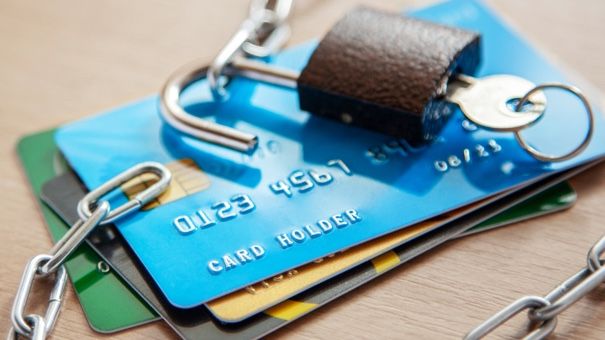Hey there! This guide is all about keeping your credit card info safe and sound. Let’s dive in!
Why You Should Care
With all the data breaches happening these days, it’s super important to protect your personal info—like your credit and debit card numbers, Social Security number, and even your address. This guide will help you keep your info secure, spot if someone’s messing with it, and figure out what to do if you fall victim to identity theft.
Before Anything Happens: Set Up Some Safeguards
There are a ton of ways your identity can be at risk. Some things, like big corporate data breaches, are out of your control, but there are definitely steps you can take to protect yourself.
We’re focusing on how to guard against both corporate and individual breaches, plus some common scams that are still making the rounds. Here’s how to keep your info safe:
Get Chip Cards
First off, make sure you have chip-based credit cards. If you’re still using any old magnetic-stripe cards, hit up your card issuer and ask for an upgrade. Whenever you can, use the chip instead of swiping.
Go Contactless
Contactless cards and mobile wallets are also a great option since they offer better encryption and security than those old magnetic stripes.
Secure Your Online Transactions
When you’re shopping online, make sure the web address starts with “HTTPS” instead of just “HTTP.” The “S” means it’s secure, so your info is encrypted and private.
Watch Out for Phishing
Phishing is when scammers try to trick you into giving up your personal info through fake emails, calls, or websites. You’ve probably heard of the classic “Nigerian Prince” scam.
How to Spot Phishing:
- Be cautious of urgent messages.
- Always call the company directly if something seems off.
- Use two-factor authentication whenever you can.
- Keep your software updated.
- Back up your info regularly.
Scammers often mimic official emails, so if you get a message that seems fishy, double-check the sender’s address for typos. And if a financial institution reaches out, always call their official customer service line before responding.
Typosquatting
Typosquatting is when scammers buy domains that are just a little off from the real ones to trick you into visiting their site. For example, can you spot the difference between www.lifelock.com and www.Iifelock.com? (The second one is a fake!)
How to Avoid Typosquatting:
- Double-check your typing.
- Bookmark your favorite sites.
- Use search engines to find what you need.
- Look out for any weird grammar or spelling mistakes.
Phone Scams
Phone scams are sneaky and can catch anyone off guard. Don’t think they only target older folks—Millennials are actually more likely to give out personal info over the phone.
Tips to Avoid Phone Scams:
- Never share info with cold callers.
- Don’t rush to respond; let it go to voicemail first.
- If you get a call from a number you don’t recognize, look it up before calling back.
Skimming
Skimming is when thieves use small devices to steal your card info, often at gas stations or ATMs. It’s super common and easy to miss.
How to Protect Yourself from Skimming:
- Always check card readers before using them.
- Use credit cards instead of debit cards when possible.
- Keep an eye on your account activity.
Physical Theft
Your wallet or phone can be stolen, putting your personal info at risk. Here’s how to keep your stuff safe:
- Keep your belongings out of sight.
- Shred any documents with personal info.
- Stay on top of your mail and deliveries.
During: Spotting Identity Theft
If you think your info has been compromised, keep an eye out for these signs:
- Weird charges you don’t recognize.
- Small test charges on your account.
- Sudden drops in your credit score.
- Missing mail or unexpected calls from debt collectors.
- Unexplained two-factor authentication alerts.
If you notice any of these, contact one of the major credit reporting agencies (Experian, Equifax, or TransUnion) and set up a fraud alert.
After: Recovering from Identity Theft
If you’ve confirmed that your info has been stolen, don’t panic! There are steps you can take to minimize the damage.
First, know that you’re protected by the FTC’s Identity Theft Fraud Victim Bill of Rights. This gives you a bunch of rights to help you deal with the situation.
Next Steps:
You can either set up a fraud alert or a credit freeze, depending on how serious the situation is.
Fraud Alerts:
These stop fraudsters from opening new accounts in your name. There are three types:
- Initial Fraud Alerts: Lasts 90 days.
- Extended Fraud Alerts: Lasts 7 years.
- Active Duty Alerts: For military members, lasts 1 year.
Credit Freezes:
If your info is being used for serious fraud, a credit freeze is the way to go. It stops new accounts from being opened in your name but can make it harder for you to open new accounts too.
To set up a credit freeze, you’ll need to contact the three major credit agencies. If you want to lift the freeze later, you’ll have to reach out to each agency again.




